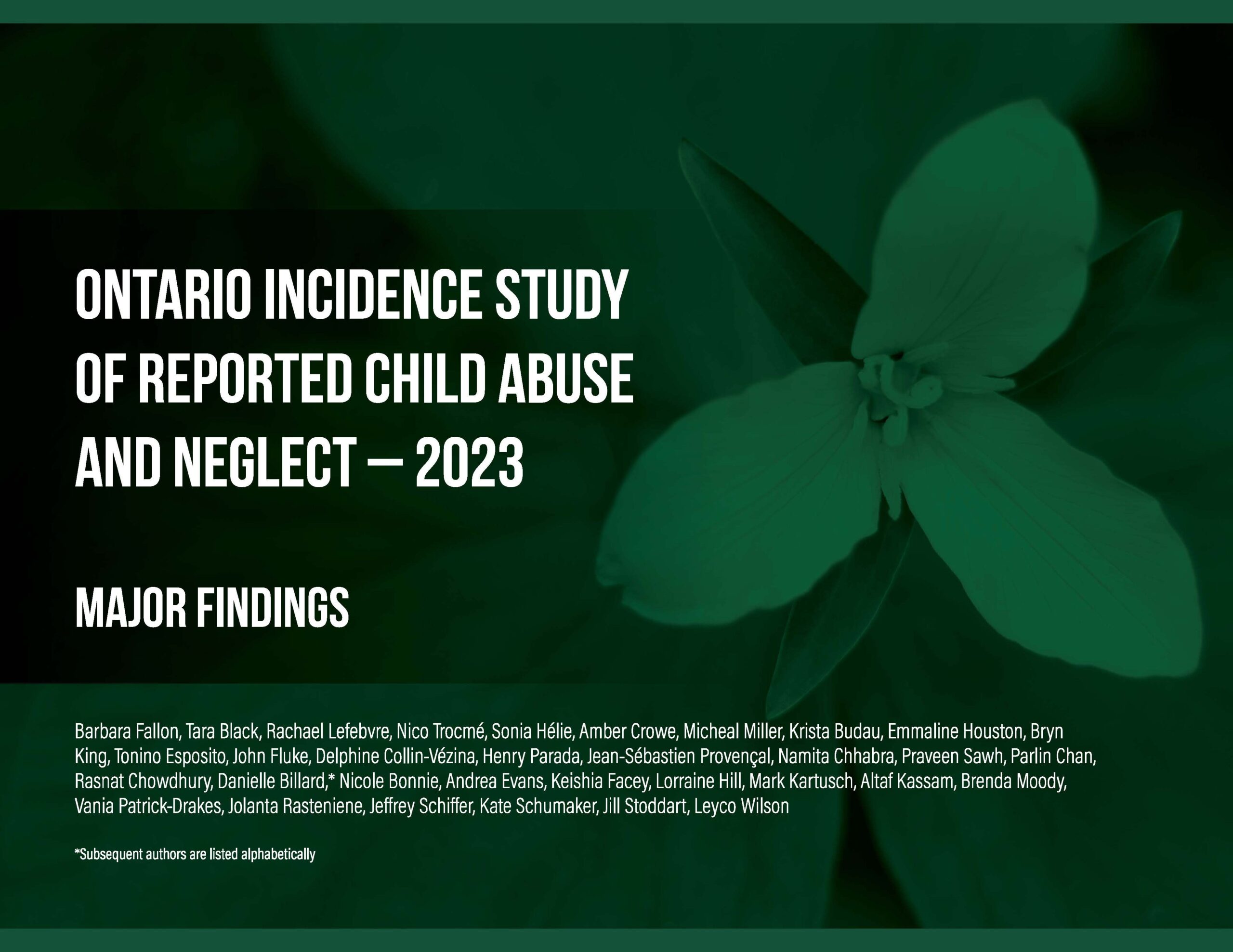 The Ontario Incidence Study of Reported Child Abuse and Neglect (OIS) has released its latest findings on child abuse in Ontario. The OIS-2023 is the seventh provincial study to examine the incidence of reported child maltreatment and the characteristics of the children and families investigated by child protection services. The previous studies were conducted in 1993, 1998, 2003, 2008, 2013 and 2018.
The Ontario Incidence Study of Reported Child Abuse and Neglect (OIS) has released its latest findings on child abuse in Ontario. The OIS-2023 is the seventh provincial study to examine the incidence of reported child maltreatment and the characteristics of the children and families investigated by child protection services. The previous studies were conducted in 1993, 1998, 2003, 2008, 2013 and 2018.
The findings of the OIS-2023 are based on 6,799 child maltreatment investigations conducted in a representative sample of 20 child welfare agencies across Ontario in the fall of 2023.
Some of the study’s key findings from 2023 are provided below. Note that in order to make OIS-2023 comparable with previous OIS reports, the data presented in the study are based on a sample of investigations involving children under 16 years old. The OIS research team will also continue to work with OACAS and the One Vision One Voice team to produce a report looking at findings related to African Canadian children, youth, and families.
- 77% of maltreatment investigations were focused on a concern of abuse or neglect; 23% of investigations were concerns about a risk of future maltreatment.
- 42% of investigations were unfounded.
- An estimated 125,879 investigations were conducted representing a rate of 46.15 investigations per 1,000 children. The number of investigations decreased by 15.3% between 2018 and 2023.
- There were no out-of-home placements in 97% of investigations.
- 3% of investigations resulted in a change of residence for the child:
- 2% to informal kinship care
- 1% to foster care (includes foster and kinship care)
- Less than 1% to residential/secure treatment or group homes
- At least one primary caregiver risk factor was identified in 81% of substantiated investigations. Frequently reported caregiver risk factors included being a victim of intimate partner violence (56%); mental health issues (37%), and having few social supports (29%).
- In 42% of substantiated investigations, at least one concern with a child’s ability to function was identified. Frequently reported child-functioning concerns included academic/learning difficulties (20%), depression/anxiety/withdrawal (17%), aggression/conduct issues (12%), and ADHD (10%).
- 17% of investigations were identified as remaining open for ongoing services; 83% of investigations were closed.
- The difference between 2018 and 2023 incidence rates were statistically significant in those reported by a number of referral sources: school (from 19.35 to 14.79 per 1,000 children), custodial or non-custodial parent (from 7.80 to 4.93 per 1,000 children), and child or self-referral (from 0.64 to 0.20 per 1,000 children). The decrease in those referred by “others” and “unknown” sources were also statistically significant.
- Exposure to intimate partner violence continues to represent the largest proportion of substantiated maltreatment investigations. The incidence of substantiated maltreatment by primary category of maltreatment in 2023 was:
- 48% – exposure to intimate partner violence
- 26% – neglect
- 13% – physical abuse
- 11% – emotional maltreatment
- 3% – sexual abuse
The Ontario Study of Reported Child Abuse and Neglect (OIS-2023) is available from the Canadian Child Welfare Research Portal (CWRP) and can be found here.
A separate report concerning First Nations children in Ontario is available here.